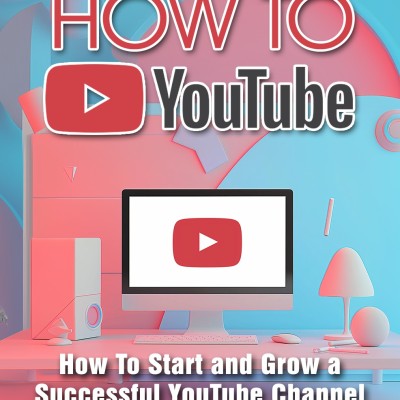
prepping.com
The Epidemic of False Mental Health Labels
Why So Many Kids Are Branded With Disorders They Don’t Have
On September 12, UK psychiatrist Sami Timimi published a bold article in The Globe and Mail called “When mental-health diagnoses become brands, the real drivers of our psychic pain are hidden.” In it, he lays out some uncomfortable truths about modern psychiatry—truths many in the profession prefer not to admit.
Timimi’s message is simple but unsettling: psychiatry doesn’t work like the rest of medicine. Its diagnoses aren’t built on hard science or lab tests. They’re shifting labels that grow or shrink with social trends, cultural anxieties, or professional fashions. In other words, mental health categories often act more like branding than biology.
Why Psychiatry Stands Apart
When doctors diagnose pneumonia or a broken leg, the label points to a clear medical process. Tests confirm it, and treatments target the cause. Psychiatry, on the other hand, doesn’t have that kind of foundation. There are no blood tests or brain scans to confirm depression, ADHD, or bipolar disorder. Instead, these conditions are stitched together from symptom lists, open to endless interpretation.
That difference matters. Psychiatric drugs don’t fix disease processes the way insulin treats diabetes. They change brain chemistry for a while—like alcohol or narcotics—but they don’t cure anything. Too often, they only mask symptoms.
The Childhood Diagnosis Explosion
A tangled web of diagnoses, medication, and online influence blurs the boundaries between ordinary struggles and mental health labels.
One of today’s biggest concerns is the flood of psychiatric labels slapped on kids and teens. ADHD, depression, anxiety, autism, PTSD—the list keeps growing. Many children now carry several diagnoses at once, something almost unheard of in real medical specialties.
Social media fuels the problem. Young people scroll through influencers talking about ADHD or “neurodiversity” and start diagnosing themselves. The criteria are vague enough that half a classroom could test “positive” on an ADHD checklist. Everyday struggles—like being restless, shy, or easily distracted—are increasingly called disorders instead of normal parts of growing up.
Personal Struggles Aren’t Diseases
Being human means facing sadness, anxiety, loneliness, or stress. Much of what psychiatry calls “pathology” really comes from life circumstances: poverty, discrimination, divorce, grief, or simple exhaustion. Calling these hardships “disorders” hides the real causes.
A teen feeling pressure at school or an adult grieving job loss doesn’t need a diagnosis—they need understanding. But today’s system pushes people toward medical labels and prescriptions, expanding the definition of “mental illness” until normal emotions look like diseases.
The Drug Illusion They Don’t Want You to Know About
Timimi also takes aim at the comforting myth that patients just need to keep trying antidepressants until they find the “right one.” Health services even compare it to dating—just keep switching until you find your match.
But the science doesn’t back that up. Studies show antidepressants and other psychiatric drugs usually have small, non-specific effects. Many depressive episodes improve naturally over time, yet improvements are credited to the drugs. Increasing doses or swapping pills rarely changes long-term outcomes.
The STAR*D trial—once hailed as proof of antidepressant effectiveness—later turned out to be riddled with misconduct. It cost $35 million and helped prop up false hopes about “the right drug” being just around the corner.
How Misinformation Spreads
The “chemical imbalance” story may be discredited, but it’s still sold to the public through drug ads, health journalism, and even doctors’ offices. This keeps patients believing their suffering comes from a brain defect only medication can fix.
For teenagers, this mixes dangerously with social contagion. Online spaces romanticize mental health labels, turning normal ups and downs into proof of illness. Many kids end up medicalized and medicated, even though the long-term safety of these drugs is shaky at best.
The Impact on Families
Parents are told that diagnoses like ADHD or depression will help their kids get the right support. But labels can weigh heavily. They shape how children see themselves, often leaving them feeling broken or permanently damaged.
Worse, the drugs themselves carry risks. Antidepressants, for example, are linked with a doubled suicide risk in young people. Instead of medication, Timimi argues children need presence, patience, and encouragement to face challenges as part of life, not as signs of disease.
The Mental Health Industry
Behind all this is a bigger issue: psychiatry’s deep ties to corporate and institutional interests. Each new diagnosis means more customers for drug companies, therapists, and psychiatrists. It’s no surprise the “mental health industrial complex” keeps expanding.
Those who question this system often find themselves ignored or pushed aside. Pharmaceutical money steers research, medical education, and professional organizations. Meanwhile, psychiatric drugs have quietly become one of the leading causes of death worldwide, after heart disease and cancer.
A Better Way Forward
None of this means people don’t suffer. Some individuals do find limited relief from psychiatric treatment. But Timimi’s point is that medicalization shouldn’t be the first step. Emotional pain is part of being human—it signals struggle, not necessarily disease.
Real help comes from compassion, patience, and community support. It comes from tackling poverty, inequality, and family breakdown, not just writing prescriptions. By resisting the urge to label every sadness as a disorder, we protect dignity and restore perspective.
Resisting the Medicalization of Human Life
If psychiatry is drifting further from science, it’s no wonder so many patients feel betrayed. As Timimi warns, the system has turned normal struggles into chronic diseases and temporary pain into permanent conditions.
His appeal is clear: let’s stop pathologizing humanity. Children don’t need more labels; they need love, guidance, and the chance to grow. Adults don’t need endless drug experiments; they need support in facing real-life problems.
The question lingers: if psychiatrists keep clinging to myths, are they fooling themselves as much as their patients? Timimi thinks so. And if that’s the case, then our duty—as families, communities, and citizens—is to take mental health back from industry and return it to the reality of human life.










